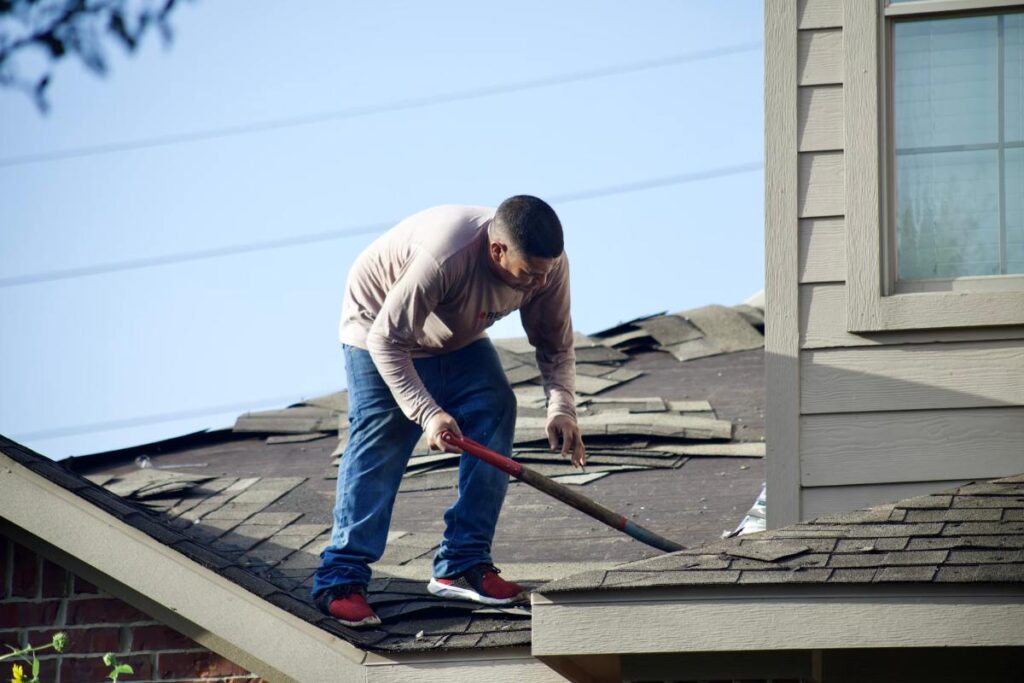Your home’s roof is more than just a protective covering; it’s a crucial component that impacts your property’s overall aesthetic appeal, energy efficiency, and structural integrity. Roofs can deteriorate due to exposure to weather elements, wear and tear, and lack of maintenance. However, by investing in roof renewal, homeowners can enhance their homes’ curb appeal and functionality and increase their property value. This comprehensive guide lists the importance of roof renewal, the signs indicating the need for renewal, the different types of roofing materials available, the renewal process, and essential tips for homeowners to maximize the potential of their roofs.
Importance of Roof Renewal
Roof renewal involves replacing or upgrading your existing roof to improve its performance, durability, and longevity. It’s a proactive measure that helps homeowners address issues such as leaks, cracks, and water damage while preventing future problems. The reputable roofing team at fairandsquareroofing.com suggests having regular roof inspections and maintenance as part of your home care routine. These proactive measures can identify minor issues before they become major problems, saving you time, money, and stress in the long run. By renewing your roof, you can:
- Enhance Curb Appeal: A new or well-maintained roof can enhance the appearance of your home, increasing its curb appeal and overall attractiveness.
- Improve Energy Efficiency: Modern roofing materials and technologies offer better insulation and ventilation, helping to regulate indoor temperatures and reduce energy consumption.
- Ensure Structural Integrity: A sturdy and well-maintained roof supports your home’s structure, protecting it from damage and ensuring long-term structural integrity.
- Increase Property Value: A new roof adds value to your home and makes it more attractive to potential buyers.
Signs You Need Roof Renewal
Several signs suggest that it’s time to renew your roof:
- Age: Most roofing materials have a limited lifespan, depending on the material and environmental factors. If your roof is nearing the end of its expected lifespan, it’s advisable to consider renewal.
- Leaks and Water Damage: Persistent leaks, water stains on ceilings, and visible signs of water damage indicate roof problems that require immediate attention.
- Missing or Damaged Shingles: Missing, cracked, or curled shingles are signs of roof deterioration and vulnerability to water infiltration. Damaged shingles compromise the roof’s ability to protect your home from the elements.
- Sagging or Uneven Roof Surface: A sagging or uneven roof surface may indicate underlying structural issues, such as rotting decking or compromised supports, necessitating roof replacement.
- Increased Energy Bills: Poor insulation or ventilation can lead to higher energy bills. Renewing your roof with energy-efficient materials can help reduce energy costs.
Types of Roofing Materials
When renewing your roof, you have several options to choose from, each with its unique characteristics, advantages, and considerations. Wood shingles and shakes complement traditional and contemporary home designs. While they require regular maintenance to prevent decay and insect infestations, they offer excellent insulation and weather resistance. On the other hand, slate roofs are prized for their timeless elegance, durability, and longevity, lasting up to 100 years or more with proper maintenance. However, due to their weight and complexity, they are also one of the most expensive roofing materials and require professional installation.
Renewal Process
The roof renewal process typically involves several steps. A professional roofing contractor conducts a comprehensive inspection of your roof, assessing its condition, identifying any issues or damage, and determining the best course of action. The existing roofing materials are removed to expose the roof deck and substrate if necessary. This step may involve tearing off old shingles, underlayment, and flashing to prepare the surface for installation. Proper preparation is essential to address underlying issues and prevent future problems.
The new roofing materials, whether shingles, tiles, or metal panels, are installed according to manufacturer specifications and industry best practices. This step may include adding underlayment, flashing, vents, and other components to ensure proper sealing and ventilation. Once the installation is complete, the roofing contractor conducts a final inspection to verify the quality of workmanship and address any remaining issues. The job site is cleaned, and debris is removed to keep your property neat and tidy.
Essential Tips for Homeowners
Invest in routine roof inspections by qualified professionals to detect any issues early, and address them promptly. Keep gutters clear of debris and ensure proper drainage to prevent water-related problems. Tree branches hanging over your roof can risk damage from falling debris, branches, or leaves. Trim back overhanging branches to maintain proper airflow and sunlight exposure. Proper attic ventilation prevents condensation, prolonging the life of your roof. Ensure clear and unobstructed vents promote airflow and avoid mold and mildew growth. If you notice leaks, missing shingles, or damaged flashing, address them promptly.

Roof renewal is a proactive investment that can enhance your home’s beauty, functionality, and value. By understanding the importance of roof renewal, recognizing the signs indicating the need for renewal, exploring different roofing materials, and following essential tips for homeowners, you can maximize the potential of your roof and enjoy long-lasting performance and peace of mind. Whether renovating an older home or upgrading your current roof, prioritize quality materials, professional installation, and ongoing maintenance to ensure a durable and attractive roof that protects your home for years.











